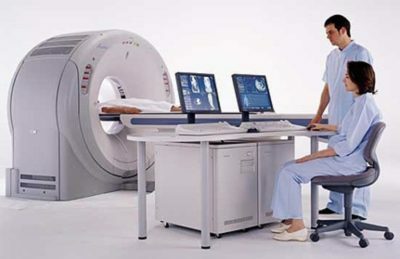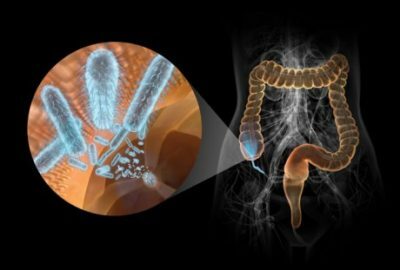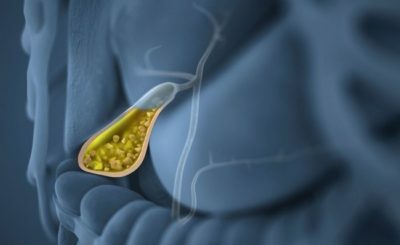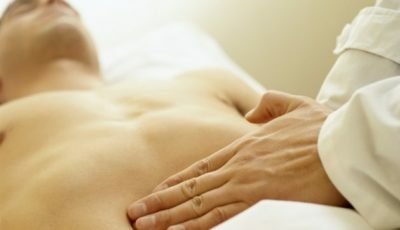1 Characteristic pathologies
BDS( or duodenum papilla) is closely related to the pancreas, bile duct system and directly to the 12-colon. Microflora, stagnation, pressure in them affect the state of OBD.Diseases of the pharyngeal papilla are difficult to detect due to the fact that the symptoms for diseases of the gastrointestinal tract( GIT) are common. An important symptom that can talk about the pathology of OBD is jaundice or pancreatitis with pain.

We recommend you to read
- Symptoms of spleen diseases
- How to conduct an examination of esophagogastroduodenoscopy
- Symptoms and treatment of duodenal diseases
- Effective agent for gastritis and gastric ulcer
In cases of OBD, the outflow of bile and pancreatic juice is disturbed, which affects the duodenum, liver, pancreasand biliary tract. The nipple fester itself can also undergo in severe cases irreversible processes.
Diseases of the pharyngeal papilla are divided into:
- inflammatory( acute and chronic papillitis),
- tumors( benign and malignant).
Stenosing duodenal papillitis is considered a secondary disease of BDS and very often occurs against the background of choledocholithiasis, duodenitis, cholangitis, pancreatitis. Injury, inflammatory infection and subsequent dysfunction of the sphincter of Oddi are caused by stones migrating with cholelithiasis. Ulcerous disease of the DPC, in which the acid-base balance is disturbed, also provokes an inflammatory-fibrosing process due to the injury of the OBD with acid.
Stenosis of OBD usually occurs without symptoms or its manifestation is attributed to other pathological processes in the gastrointestinal tract. The main symptom of papillitis is pain in the sternum or above the navel at the beginning of food intake( acute with colic), after a while after eating rich and fatty foods, and at the end of the day or on an empty stomach( boring pain).In some cases, there may be nausea and vomiting.
The main forms of chronic stenosis of the pharyngeal papilla are:
-
 IMPORTANT TO KNOW! Gastritis? Ulcer? To have a stomach ulcer not turned into cancer, drink a glass. ..Read the article & gt; & gt;
IMPORTANT TO KNOW! Gastritis? Ulcer? To have a stomach ulcer not turned into cancer, drink a glass. ..Read the article & gt; & gt;
- adenomiomatous,
- fibrocystic,
- atrophic sclerotic.
Tubular and villous adenoma, papilloma, fibroma - benign formations( increased proliferation of intestinal tissues).Specific treatment is not exposed. Usually, the treatment is conservative. If necessary, endoscopic papillosphincterotomy is performed( dissection for normalization of bile outflow and pancreatic juice) or stenting of the OBD.
Carcinoma( cancer) of the pharyngeal papilla is a frequent oncological disease( approximately 5% of all GI tracts) and, depending on the stage of development, has the following symptoms:
- jaundice;
- colic or aching pain;
- yellowing and itching of the skin;
- frequent diarrhea;
- temperature increase;
- blood in the feces;
- nausea;
- vomiting.
Men are more often subject to disease after 50 years. Genetic predisposition, pancreatitis, inflammatory infections and pathologies of the biliary tract can be the cause of the disease. At a cancer of a OBD of the serious form surgical intervention is shown. Timely operation gives a chance of survival up to 5 years.
2 Diagnosis and treatment
The effectiveness of treatment of diseases of the large duodenal papilla depends on accurate and correct diagnosis, including differential diagnosis. There are various methods of examination in the area of the duodenum and the large duodenal papilla:
-
 Gastroenterologist VAZHENOV: "I beg you, if you began to worry about abdominal pain, heartburn, nausea, do not do gas in any way. .."Read more & gt; & gt;
Gastroenterologist VAZHENOV: "I beg you, if you began to worry about abdominal pain, heartburn, nausea, do not do gas in any way. .."Read more & gt; & gt;
- instrumental( laparoscopy, endoscopy, beam method),
- ERCP( endoscopic retrograde cholangiopancreatography),
- EGDS( esophagogastroduodenoscopy).
- cholescintigraphy,
- MRCPG( magnetic resonance cholangiopancreatography).

ultrasound and computed tomography( CT) in the diagnosis of fetal papilla pathologies do not give such results as ERCP( has low traumatism) and endoscopic X-ray examination method. In the case of persistent jaundice, operating cholangiography is performed. A certain result can be achieved in a combination of methods( for example, ERCP with CT and ultrasound).An important role in determining the shape of the papillitis belongs to intravenous choleography. When detecting neoplasms, a biopsy is performed( morphological study).Currently, the application finds MRCPG, which is more effective in assessing the state of organs than other methods, is an alternative to ERCP and less traumatic.
Buzhirovanie( enlarging the lumen with special instruments of the tubular structure) the pharyngeal papilla during the operation is also performed for the purpose of diagnosis, but it can cause trauma in the area of the sphincter of Oddi. Methods of laboratory diagnostics are biochemical analyzes of blood and urine.
ADVICE FROM THE MAIN GASTROENTEROLOGIST
Korotov SV: "I can recommend only one remedy for the rapid treatment of Ulcer and Gastritis, which is now recommended by the Ministry of Health. .." Read testimonials & gt; & gt;
Conservative treatment is performed with mild disease and includes antibacterial, cholinolytic and antacid preparations, strict adherence to the diet. Operative treatment of pathologies of the OBD is aimed at eliminating the cause of the obstruction of the bile duct. Concomitant disease is treated simultaneously. With the started form of the structure of the OBD or the absence of results after conservative treatment, endoscopic papillosphincterotomy is shown - the main treatment method in this case, which is performed through the PDK.Complications after this minimally invasive operation are rare, but still have a place to be. Therefore, this operation is carried out only with the consent of the patient. With the initial form of constriction of the OBD, endoscopic dilatation( expansion with the aid of a device) can be performed.
3 Conclusion and conclusions of
Until a certain time, the OBD was not considered. Therefore, treatment of concomitant diseases of the gastrointestinal tract, for example, such as cholecystitis and cholelithiasis, did not bring the expected result. Thanks to the improvement of diagnostics in this field, it became possible to treat diseases of the feces papilla and improve the health status of patients with gastrointestinal pathologies. In the presence of any abnormalities in the digestive tract should be excluded from the diet of smoked meat, soda, alcohol and spicy and fatty dishes.
WE RECOMMEND!
For prophylaxis and treatment of Digestive Diseases our readers advise Monastic tea. This unique remedy consists of 9 medicinal herbs useful for digestion, which not only complement, but also enhance each other's actions. Monastic tea will not only eliminate all symptoms of the gastrointestinal tract and digestive system, but will also permanently eliminate the cause of its occurrence.
Opinion of doctors. .. "
If there are diseases of the digestive tract( cholecystitis, duodenitis, pancreatitis), it is necessary to strictly adhere to the diet and exclude from the diet canned foods, fatty meats and fish, very fresh bread, fried pies and eggs, coffee, chocolate and ice cream. Also, morning exercises, walking and swimming have a therapeutic effect on the general condition of the body during the rehabilitation period after the gastrointestinal disease.
- 1 Characteristic pathologies
- 2 Diagnosis and treatment
- 3 Conclusion and conclusions
The lateral papilla is the name of a large duodenal papilla located approximately in the middle of the inner surface of the duodenum on the side of the pancreas. Through the large duodenal papilla( BDS) into the duodenum( DPC), bile and pancreatic juice enters the two ducts, and their intake is regulated by the sphincter of Oddi located in the most Fatea papilla. Also, the sphincter of Oddi prevents entry into the pancreatic and bile ducts of intestinal contents. There are cases when these ducts have separate openings in the duodenum. Regulation of the amount of bile and pancreatic juice depends on the composition of the incoming food.
Do you have gastritis?
GALINA SAVINA: "How easy is it to cure gastritis at home for 1 month. A proven method is to write down a recipe. ..!"Read more & gt; & gt;



